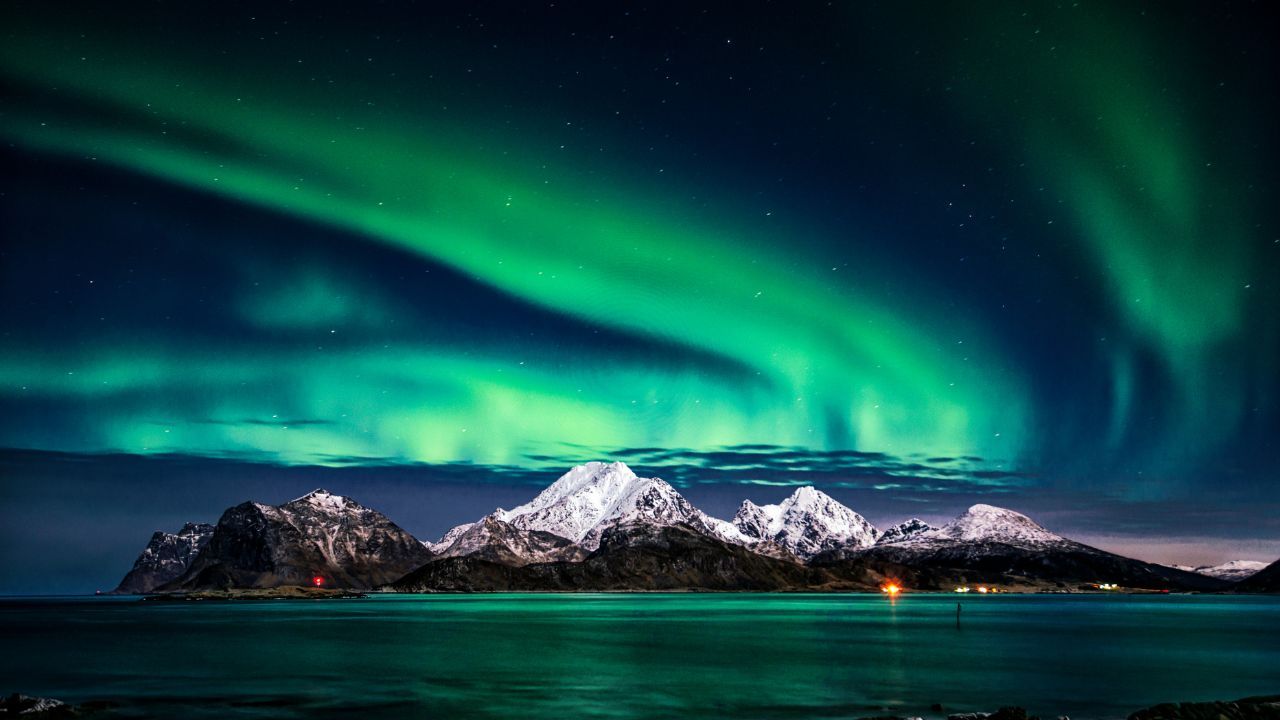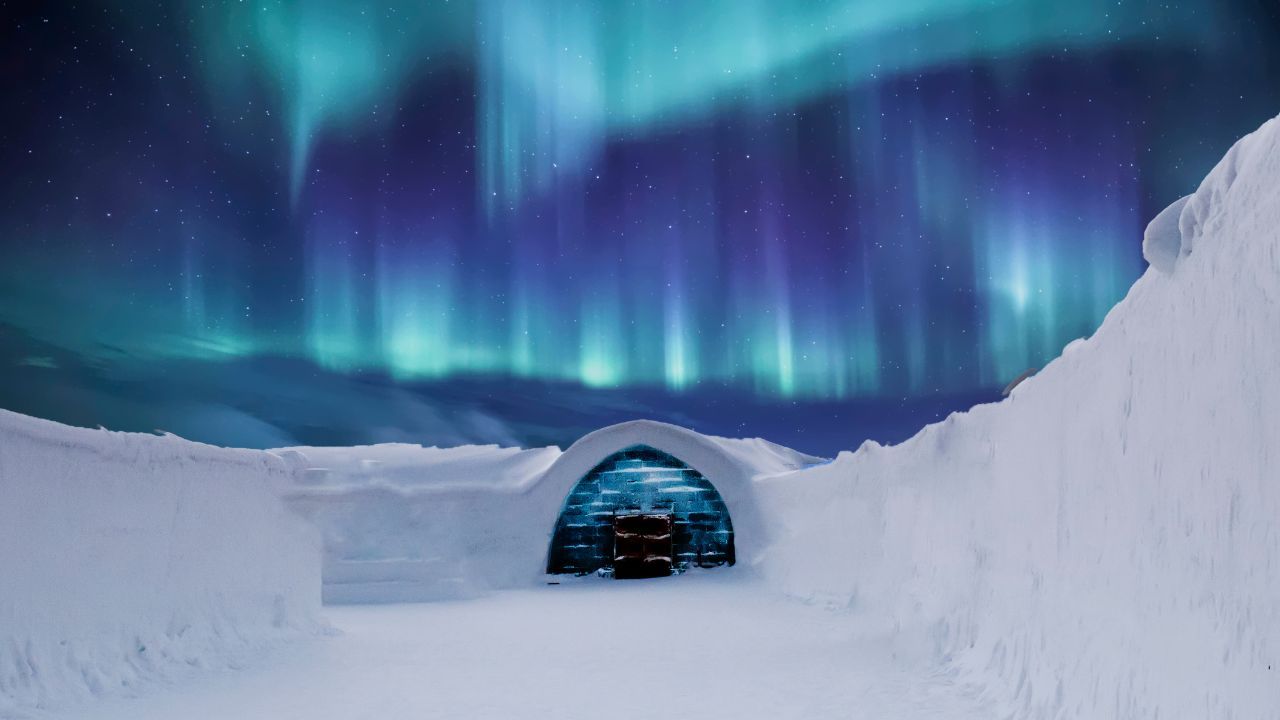
You may have seen various pictures or videos of the aurora borealis on social media. It is one of the most beautiful natural gifts from the universe – a truly natural phenomenon. It’s probably the most breathtaking light display one can see amidst the night sky. That’s why it’s also fondly known as the “northern lights.” According to National Geographic, another term for this celestial exhibition is the “polar lights,” and this phenomenon is rarely visible beyond 70 degrees north and south latitudes.
Seeing the aurora borealis is something that’s on many people’s ‘bucket list’ because it’s a one-of-a-kind experience. Seeing this spectacular light display would make it a travel destination that could be remembered forever, and expand an individual’s horizons. Planning a trip to countries where you can bask in this spectacular light display could be considered a journey of self-discovery because many people who have seen the northern lights say that it is an enriching experience that fuels the soul.
Similar to how many people report feeling a sudden inspiration to self-reflect while staring at a beautiful supermoon in the sky, staring in awe at the aurora borealis can spark the same type of reflection or internal discoveries.
Before you book that plane ticket and plan your mission to see the aurora borealis, it makes sense to find out how these ethereal curtains of lights grace the world. Understanding its origins will help make you appreciate this jaw-dropping natural phenomenon. What is the science behind this amazing atmospheric event that has many wanderlusting travelers go to great lengths to see it and capture photos of its beauty?
What Causes the Aurora Borealis?
You can view the aurora if you are near the poles of either the northern or southern hemisphere. The term aurora borealis refers to the northern display, and it has a cousin in the south called aurora australis. Both poles show the same magnificent light display that come in beguiling colors that tantalize the eyes. The term aurora borealis means light of dawn, first coined by the scientist Galileo in 1623. It comes from the words aurora, the goddess of dawn, and boreas, the northern wind personified. Now how does this phenomenon happen on earth?
The purple, pink, blue, green, and red lights you see in the night sky are due to the activities happening on the sun’s surface. Solar storms emit massive amounts of electrically charged particles or ions. These ions traverse millions of miles and collide with the earth. Most of the ions are deflected, but some particles are drawn to the earth’s magnetic field, particularly towards the north and south poles where they become visible in the atmosphere. It’s for this reason that aurora activities are concentrated in these areas, and they manifest in the form of alluring lights
According to Tom Kerrs, a Royal Observatory Astronomer, the ions slam into molecules and atoms found in the earth’s atmosphere, consequently heating them. This process is known as “excitation,” which is akin to heating gas and making it glow. The light displays you see are molecules and atoms in the atmosphere colliding with sun ions. The enigmatic and wavy patterns of light are created by the earth’s magnetic field. At times, you may feel as if you can somehow reach out to touch these tantalizing lights. The lowest aurora is just 80 miles above the earth’s surface, while the top display could extend a few thousand miles above the earth.

Where Can You See the Aurora Borealis?
The aurora borealis or northern lights typically occur in the geographic region in the vicinity of the auroral oval. The oval indicates where the aurora borealis is most visible. It is especially pervasive between 75 and 60 degrees latitude. Hence, these lights may be visible in countries near the Arctic Circle, such as:
- Norway
- Finland
- Northern parts of Sweden
- Iceland
- Canada
- Alaska
- South Greenland
- Russia
The auroral oval shows where the aurora activity is the strongest and where the aurora borealis is most visible. But bear in mind that the auroral activity is not consistent and can be quite unpredictable. Even in the auroral oval, the appearance of these fascinating lights constantly shifts. You can see the lights for a few minutes, and they could disappear in a snap. Hence, you must be alert if you’re intent on seeing the northern lights.
Notably, having a strong aurora in Canada also doesn’t equate to a strong one in Sweden and vice versa. Moreover, strong solar storms can also have the aurora borealis appearing in lower latitudes like northern England and Scotland.
What’s the Best Time of Year to See the Aurora Borealis?
If you are determined to see the aurora borealis, dark nights and clear skies are essential. So the first step is to ensure you don’t book a hotel in some city-central, downtown location with lots of light pollution – even if the aurora borealis is said to appear in that city.
To increase your chances of seeing this elusive atmospheric spectacle even more, time your trip to a new moon. The brightness of the moon impacts the northern lights you see, so check the lunar cycles. Weather is also key in seeing the aurora borealis so the best months to observe this wondrous natural phenomenon are from December through March. It is in these months when the nights are longer and the skies are clearer with fewer clouds.
As for the specific hour in the day, although the aurora occurs throughout the night, it’s best to watch out for the aurora borealis between 17:00 (5 pm) to 02:00 (2 am). Since your chances of seeing the aurora hinge on clear skies and darkness, it is also important to monitor sunrise and sunset times.
If you’re planning to get a glimpse of the aurora borealis, monitor space weather stations for auroral forecasts. There are 3-day forecasts which are constantly updated, as well as long-term forecasts using a 27-day solar cycle. But the long-term projection is not definite since atmospheric conditions can change at any given time. Check out these recommended websites for keeping track of auroral activity to help plan your future trip:
- Aurora Forecast: Updated by a trusted northern lights expert in Iceland with 3-day forecasts, including cloud coverage
- Aurora Sky Station: Located in Abisko, Sweden with images of the aurora captured every five minutes.
- University of Alaska: Provides daily aurora forecasts with the KP index or global geomagnetic index for various regions
- Space Weather Live: Gives both 27-day and 3-day forecasts
Enjoy Viewing the Aurora Borealis in Style
You can view the aurora borealis as long as you’re in a country within the auroral oval at the most appropriate times. You can even go camping and brave the cold with the right gear. The key to spotting this elusive atmospheric display is to stay away from light pollution stemming from artificial light sources, like street lights, building lights, and even vehicle lights.
However, if you want a more optimal setting, there are recognized locations that give the best conditions for auroral activity sightings. Take a look at some of the most popular aurora-gazing sites below:
1. Kakslauttanen Arctic Resort Igloo in Finland
One of the best ways to experience the aurora borealis is from a glass igloo nestled in the snow. This is a luxurious resort in Finnish Lapland with aurora borealis-spotting as its primary attraction offered from August to late April. Guests can also ride a sled pulled by huskies, see a reindeer, go on snowmobile rides, or do ice fishing. However, this fancy accommodation comes at a steep price, which many happy clients say is worth it because they got to see their own private light show from a comfy and luxe glass igloo.
2. Northern Lights Alaska Cruise
One of the best ways to see the northern lights is on a clear night at sea. Your cruise ship serves as a perfect venue for stargazing and aurora-gazing. Moreover, being out in the ocean illuminates and enhances the northern lights because there is no artificial light interference coming from land. The Cunard company offers this Alaskan cruise route aboard the Queen Elizabeth.
3. Ice Hotel in Sweden
The very first ice and snow hotel in the north of Sweden is the iconic Ice Hotel. It’s a landmark that many travelers visit. This legendary three-decade-old hotel boasts a large observation deck that’s built for viewing the aurora borealis. The hotel offers traditional suites and chalets, but they also provide wilderness camp services to help you stay more attuned with nature whilst in the Arctic Circle.
4. Tepee in Yellowknife, Canada
Canada is one of the best locations to chase the northern lights because of its strong geomagnetic activity. Yellowknife in Canada is known as the “Aurora Capital of North America” due to its prime location and optimal viewing conditions. Stay in a cozy and quaint teepee at Aurora Village. Accommodations come with heated outdoor seats that swivel 360 degrees so you can see the sky in all its glory and not miss a thing.
5. View the Northern Lights By Rails
Experience the magic of the aurora borealis by train. For instance, Vacation by Rails offers routes that are ideal for northern lights sightings. You can opt for the Russia-Norway route known as the “Golden Eagle-Arctic Explorer Quest for the Northern Lights” package. Alternatively, they also have “The Northern Lights and Lapland” package where you get to explore train routes in Sweden and Norway.
Do You Think Chasing the Northern Lights is an Activity You’d Enjoy?
When you ask any of your adventurous or thrill-seeking friends and relatives about their travel bucket list, it is likely to include seeing the aurora borealis. Many people would give anything to see these glorious lights dancing in the night skies with their own eyes. Pictures alone will not suffice, because a photo of the northern lights won’t do it justice compared to experiencing it in person. If you have vacation leaves or long holidays up ahead, you may want to plan a trip to see the aurora borealis.
This type of activity is perfect for people who love the great outdoors, especially for those who enjoy camping, snowshoeing, hiking, stargazing, etc. Is an activity like this up your alley? Take a CircleDNA test to discover some of your genetic personality and behavioral traits, such as whether it’s in your DNA to be a thrill-seeker, or whether outdoor activities suit your genetic body type. This at-home genetic test not only provides reports on your ancestry, disease risks, nutrition, exercise, etc., but it also includes information about activities, sports, and behaviors you’re likely to enjoy based on your genetic makeup.
References:
- Aurora (National Geographic) https://education.nationalgeographic.org/resource/aurora
- When and Where to See the Northern Lights (Discover the World) https://www.discover-the-world.com/northern-lights/
- What Causes the Northern Lights (Royal Museum Greenwich) https://www.rmg.co.uk/stories/topics/what-causes-northern-lights-aurora-borealis-explained
- 22 Best Places to See the Northern Lights in 2020 (Laura Bloom) https://www.forbes.com/sites/laurabegleybloom/2020/12/30/best-places-to-see-the-northern-lights-in-2020/?sh=16ed7e6d77d7





